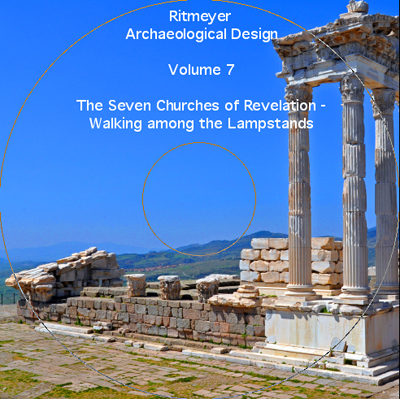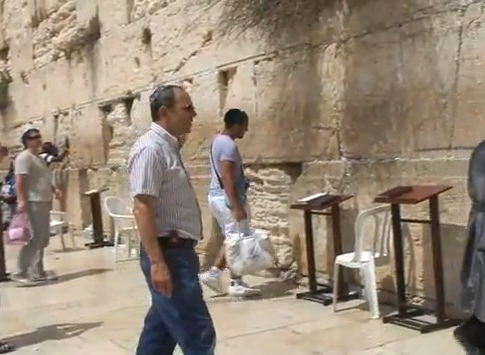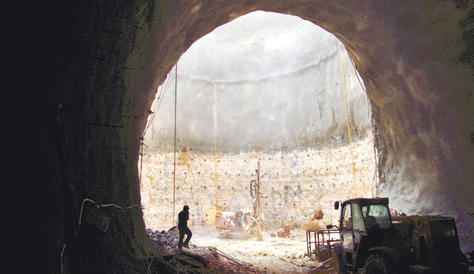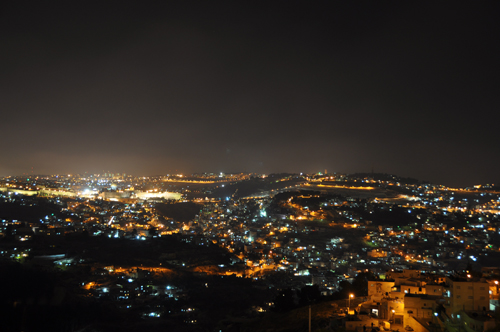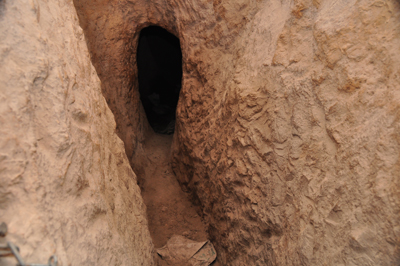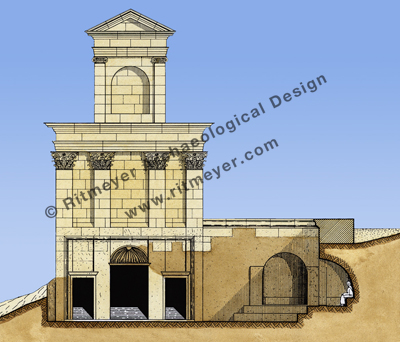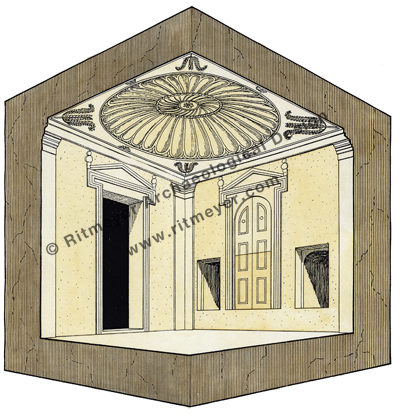The inauguration of a complex dating from the First and Second Temple periods on the Ophel has been widely reported, see for example here and here. In a previous post we mentioned that “The site was first excavated in the 1970′s under the direction of the late Prof. Benjamin Mazar and in the 1980′s and onward, Eilat Mazar has further excavated the site. The site has remains from the Israelite, Herodian (dismantled), Roman, Byzantine and Ummayad periods.”
The site is well known to me as I supervised the excavations of a large Herodian mansion in this area in 1975. My wife Kathleen also excavated in the same area. Moshe Feuer took over the supervision later on. Below the Herodian mansion, he discovered a substantial Iron Age structure that was tentatively identified by Prof. Benjamin Mazar as “The House of Millo”, mentioned in 2 Kings 12.20.
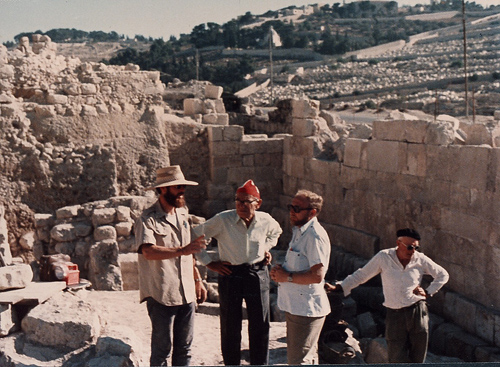
Reporting on the inauguration, Todd Bolen asked the following question:
“I’d be curious to know if there are any other archaeologists who agree with Mazar’s identification of the structure she excavated as a gate. Some years ago it seemed that even those most sympathetic to her views did not follow her on this, but perhaps that has changed. I note that the press release does not state that this is a gate but that “Mazar suggests” that it is a gate.”
I will try to answer this question. While studying Warren’s plans of this area, it became clear to me that the excavated remains were connected with a large tower-like structure, dubbed by him “The Tower that lieth out” (Nehemiah 3.26). I tried to excavate this area which is located on the other side of the road, but was stopped by the religious authorities who claimed that a Medieval Jewish cemetery was located there, which subsequently proved to be correct.
Some 10 years later, under the direction of Prof. Benjamin Mazar and his granddaughter Eilat, the excavations were expanded to the east where a large structure of the First Temple period was found. When Eilat investigated the previously excavated area, she asked me to make the plans.
While working on the plans, I imposed symmetry on the remains and at that moment I thought that the structure excavated by Moshe Feuer could have been a gateway.
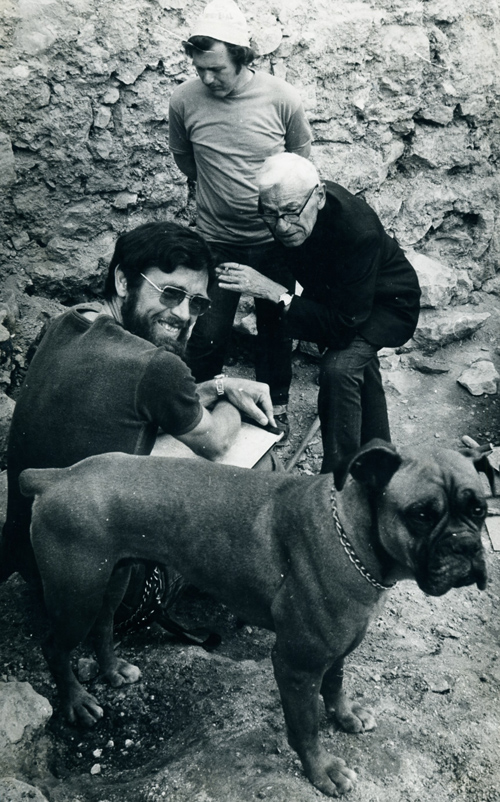
Working with Professor Benjamin Mazar was always a great pleasure as he often bounced off ideas during the many “brainstorming” sessions we had. I showed my preliminary ideas about the gate to Eilat, indicating the location where to excavate in order to prove that it was a gate. Instead of investigating the possibility, she invited the media the next day to announce that she had discovered the Water Gate! See Jerusalem Post report of April 22, 1986.
The Jerusalem Post reports that “Mazar believes the area is described in the Torah in the verse about King Solomon’s Temple: “… and the temple servants living on Ophel repaired to a point opposite the Water Gate on the east and the projecting tower” (Nehemiah 3:26). It may have been called the Water Gate because of the plethora of mikvaot in the area.”
This is a very uninformed statement, as Nehemiah 3 does not mention any temple, let alone Solomon’s Temple and the Book of Nehemiah is not part of the Torah (the five Books of Moses). The connection between the “Water Gate” and the mikvaot is untenable as the “gate” belongs to the First Temple period and the mikvaot to the Second Temple period. The earliest mikvaot date to the first century BC.
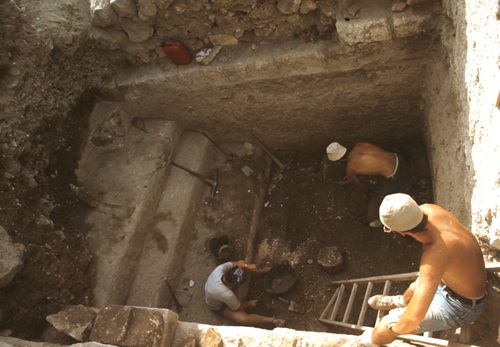
I no longer believe that the building in question is a gate, as the chambers do not resemble those of Iron Age gateways. The only complete chamber was stacked full with large storage jars which is also untypical of gateways. It would appear now that the building was a storage facility connected to a large domestic or public building.
Reading Nehemiah 3.26, it is clear that the “Water Gate” and “the tower that lieth out” are separate points along the wall. The Water Gate must therefore be located south of the tower (somewhere near the Gihon Spring). According to Warren’s excavations, this outlying tower consists of two elements, a large tower and a smaller L-shaped wall (called by Warren the “Extra Tower”). The latter was built apparently to strengthen the larger tower.
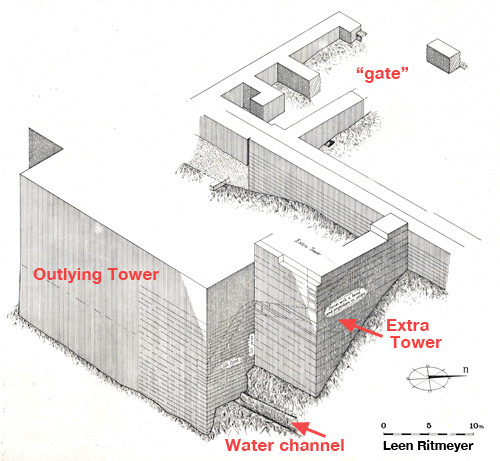
As there are some structures in this area, which, according to Eilat, belong to the 10th century BC. and if the outlying tower, which has not been excavated, belongs to this period, then the L-shaped “Extra Tower” structure must be later.
As a water channel from the First Temple period Bethesda Pool enters the “outlying tower” from the northeast, I would suggest that the “Water Gate” building served as a water distribution point, possibly during the time of King Hezekiah after he conducted the water of the Gihon Spring to the Siloam Pool. This would have left the Ophel area without a water supply and therefore a new water distribution point (where the storage jars could have been used) may have been created here to meet the needs of the local population.

